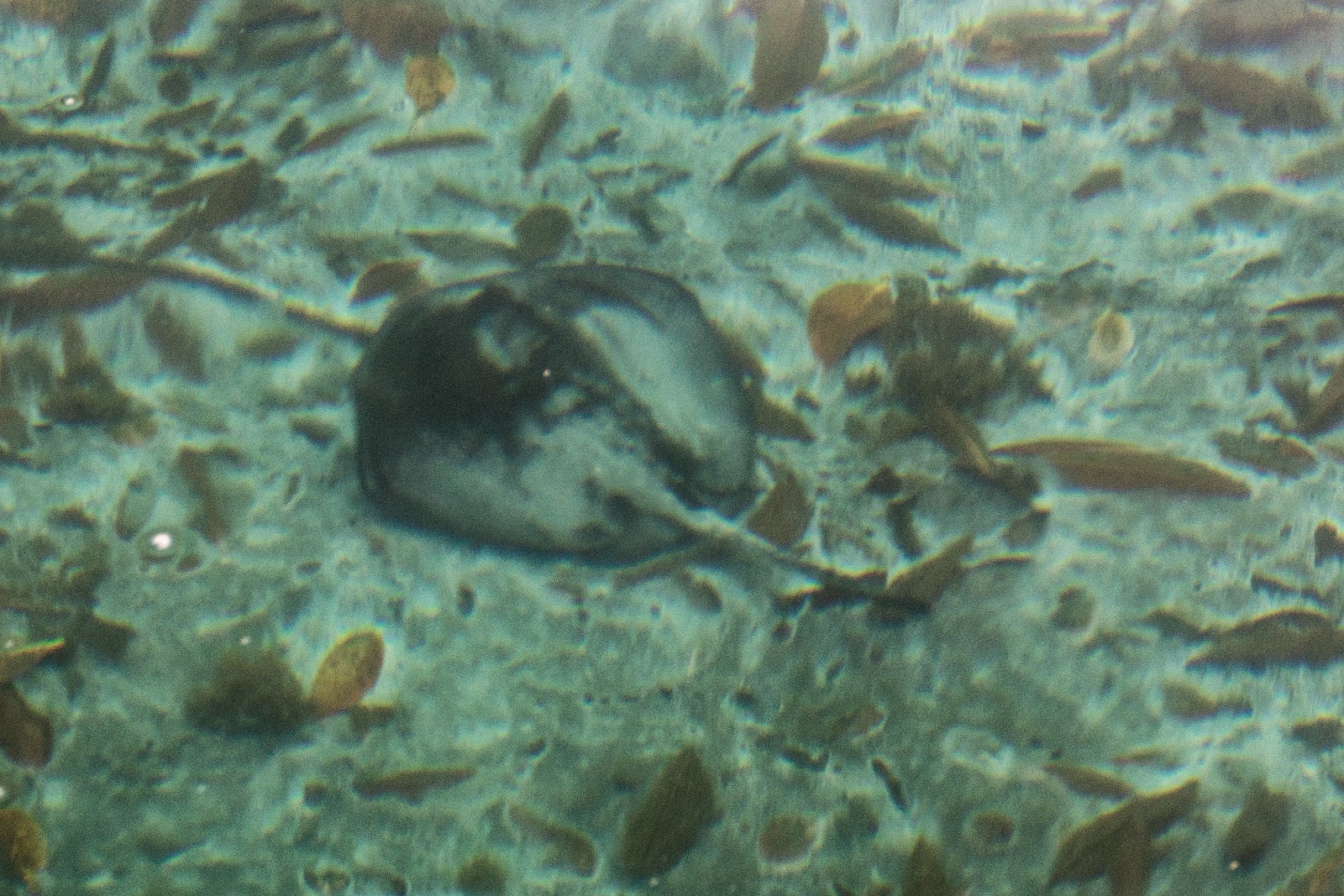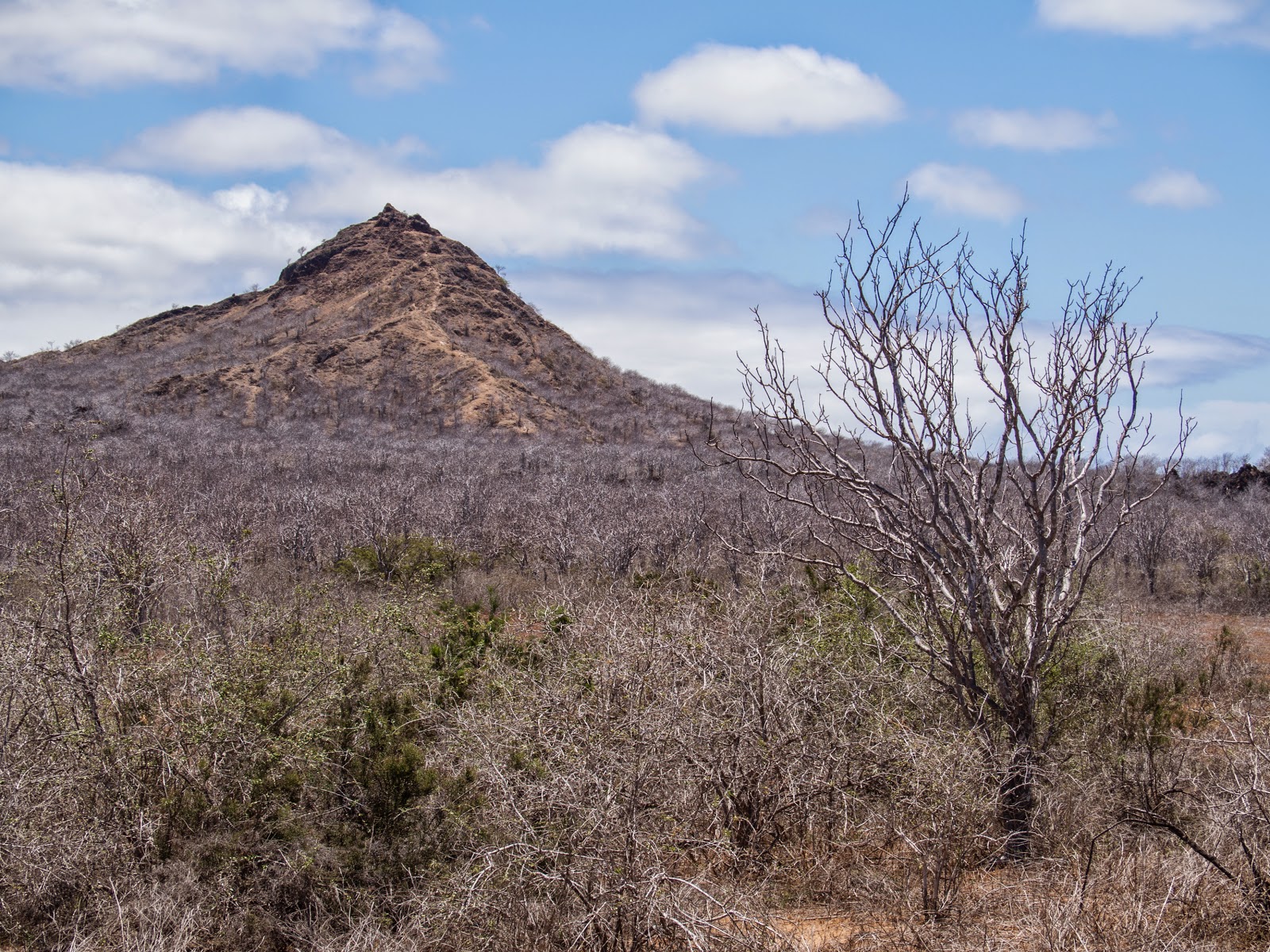According to the briefing our day starts early. At 5:40 we are on the pangas going for a ride in "Black Turtle Cove", a maze of mangroves and shallow pools.
We leave the ship before sunrise. The colors of the sky are soft pastels.
When we arrive to at the entry of the cove, we are greeted by a pelican flying across our path. Another is sitting on the front most mangroves facing the ocean.
The pangas move toward one of the shallow pools. The water is still and clear. We can clearly see the fish swimming just next to us. Hiding between the roots of the mangrove we see small sharks and few sting rays.
 |
| Small shark in the shallows |
 |
| Small Sting Ray |
Returning to the main cove, we see turtles on the water surface.
 |
| Turtles! |
Moving closer, we see that this a pair caught "in the act".
We continue moving along the mangroves, and go through a narrow opening into a more secluded inner pool. The panga driver turns off the engine and uses a puddle to slowly move us forward. Suddenly we can realize the tranquility of this magnificent place.
We see another pair of turtles, with the male chasing the female around the pool. They swim around us and we keep trying to spot them.
 |
| Spotting turtles |
We move to the next pool. Here the water is less clear, but after a while the driver spots a large white-tip reef shark.
 |
| White-tip Reef Shark |
We return to the main cove, and slowly go along the mangroves. We find different sea birds using the mangrove as a resting place.
 |
| Golden warbler |
When we start heading back we notice two rays swimming in the water. I am still not sure what type of ray they are, as they do not match any of the descriptions I know of.
By now the sun is up and its hot and we are happy to return to the ship.
 |
| View of Daphne Major, from this angle we can see the crater |
After breakfast the ship sails toward Dragon Hill, our next stop in Santa Cruz island. When we get there, we go for snorkeling along the rocks. The water is refreshing in the hot day. We did not meet any large animal, but had nice view of the rocks and sea stars.
 |
| Sea of stars |
One of the nice finds in this snorkeling is a sea cucumber of the type that almost went extinct during the rush for fishing it in the 90s. According to the books I read, divers were collecting these and selling them on the black market to be distributed in china. There each sells for thousands of dollars. During the sea cucumber boom, the divers were making fortunes and spending it in various nefarious institutes that sprang up in Puerto Ayora.
 |
| Sea Cucumber - driven almost to extinction here |
Next (its a busy morning), we go for a dry landing on the beach on Dragon Hill. This place is known for its land iguanas, which were restored to the area after introduced animals were removed (mainly goats).
We land on a black rock cropping off a small beach. On the stairs there is, as usual, a sea lion. Next to it are several large sea iguanas. Much larger than the ones we saw up until now.
 |
| Landing point. |
We cross the sandy beach and walk above the beach. Here there are tall cactus trees. Unlike the ones we saw in Genovesa, here the cacti have long sharp spines, an arms race against the turtles and land iguana that consume it.
 |
| Light-footed Sally crab in a tidal pool |
 |
We cross to an inward facing slope covered with various salt-resistant vegetation. The lush green with small opening of sands reminds me of a golf course close to the ocean. The slope goes down to a salt marsh. Here we see small birds, mainly sandpipers, sifting through the silt for food.
 |
| Salt bush |
We follow a rocky trail next to the salt marsh, and then reach the dry inner landscape. Here there is fewer bushes, and mainly large pear cacti standing tall.
Everywhere we look there are barrows that the iguanas dig for shelter. This reminds Kelly of Darwin's description that he could not find a place for a tent due to the density of the barrows.
We also see other signs of iguana presence. Tracks on the sand, dry feces, and half eaten cactus. However, we do not spot any iguana.
The trail leads up the hill to a spot from which we can see the whole area.
Going down the other side of the hill we see finches of various kinds and the skeletal remains of a large animal, probably a wild donkey.
 |
| A Finch |
David points out an iguana resting in the shade close to the trail. We all try to get a photograph of it. I do the "nature photographer" pose and go down on the ground. I slowly inch forward getting closer to the iguana. At some point David catches me and tells me I am too far from the trail. I move back, get up and try another angle.
This exercise cost me a lot later, as the sand in this area is mixed with cactus spines, and I am stung throughout my arms and legs.
We continue circling the hill and then go back to the shore. A small group of photographers lags behind to catch the views.
When we get to rocks, we see few iguanas that take to sea.
 |
| Iguana swimming |
After lunch we set off to sail around Santa Cruz Island toward Puerto Verde on the south eastern side. Once again this part gets the euphemism "marine life observation". Unlike the previous afternoon, we do not get to see much on this part.
Toward sunset we get to Puerto Ayora, the main city of the island, and also the largest human settlement in the Galapagos. The port is a natural bay, and it is busy with starboards like ours, fast day-tour boats, and fishing boats. Small taxi's go from the pier to the different ship to transport passengers and their luggage.
After dinner there is an optional "night out" in Puerto Verde. The panga takes us to the public peer and will come to pick us up two hours later. I go with some of the kids, and we visit few souvenir shops. They all carry more or less the same selection of shirts, hats, animal figurines and such. I buy few t-shirts for the family.
We continue to the "artisan market", a small collection of booths. Again, they seem to have exactly the same selection, but now each booth is more specialized to a particular type of wares.
Eventually we stop at bar/restaurant/cafe/ice cream parlor to sit. Few of us order beers, and few buy ice cream. We return with the panga back to the ship, feeling that we exhausted the town.



































No comments:
Post a Comment